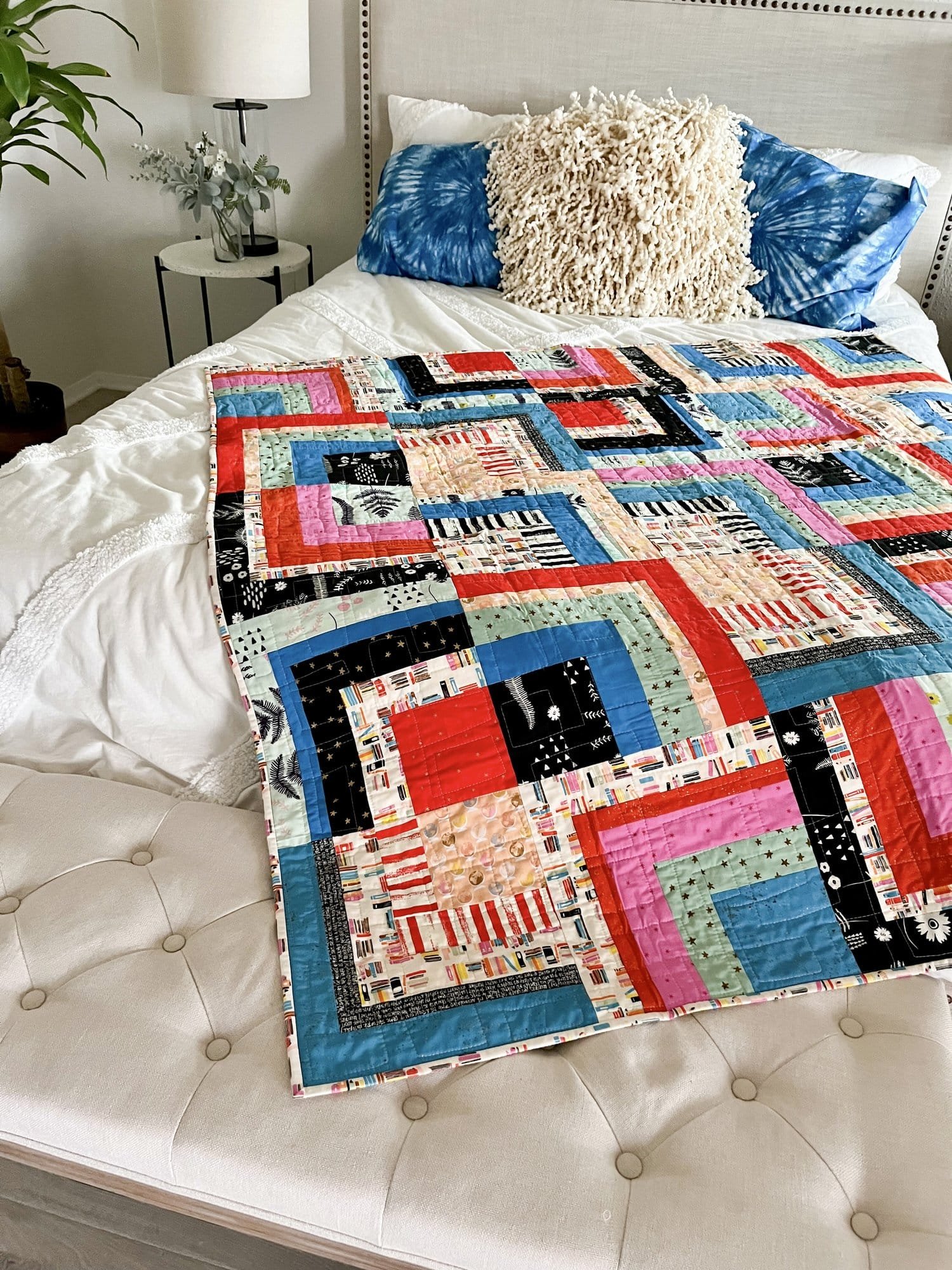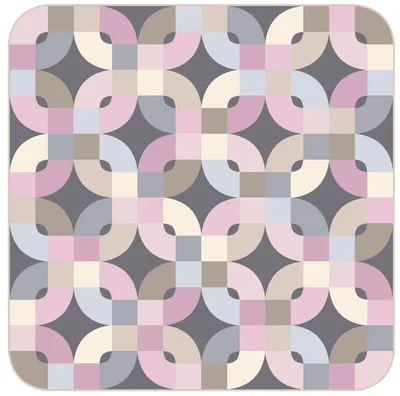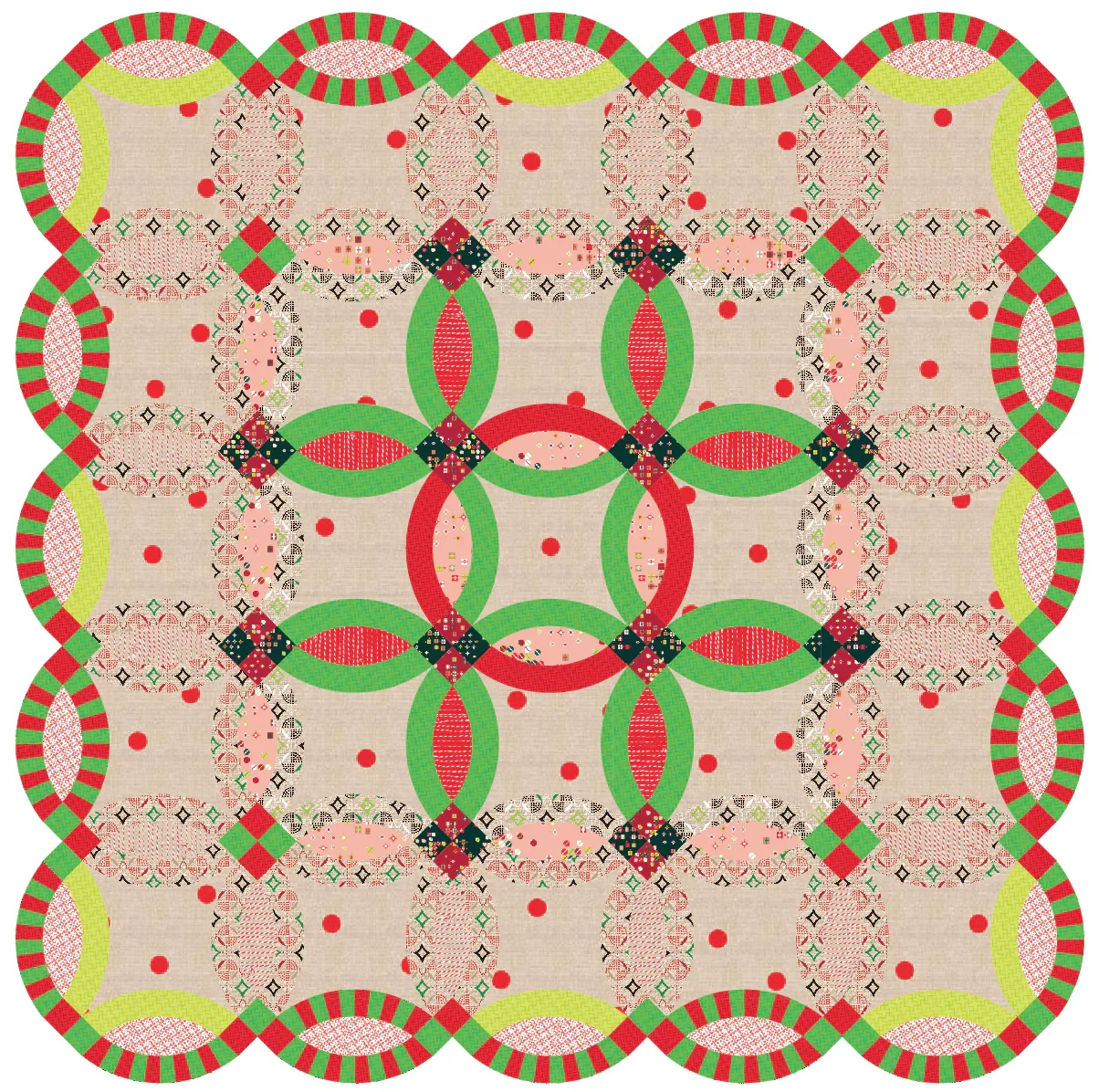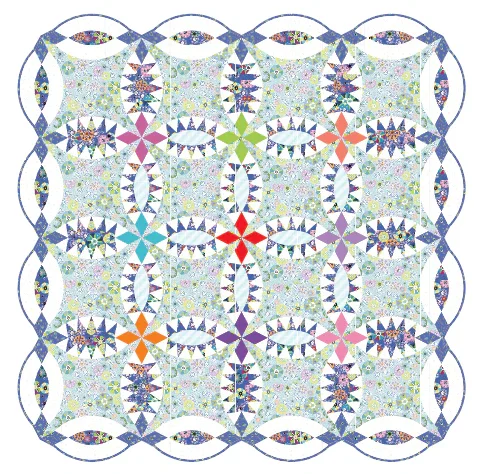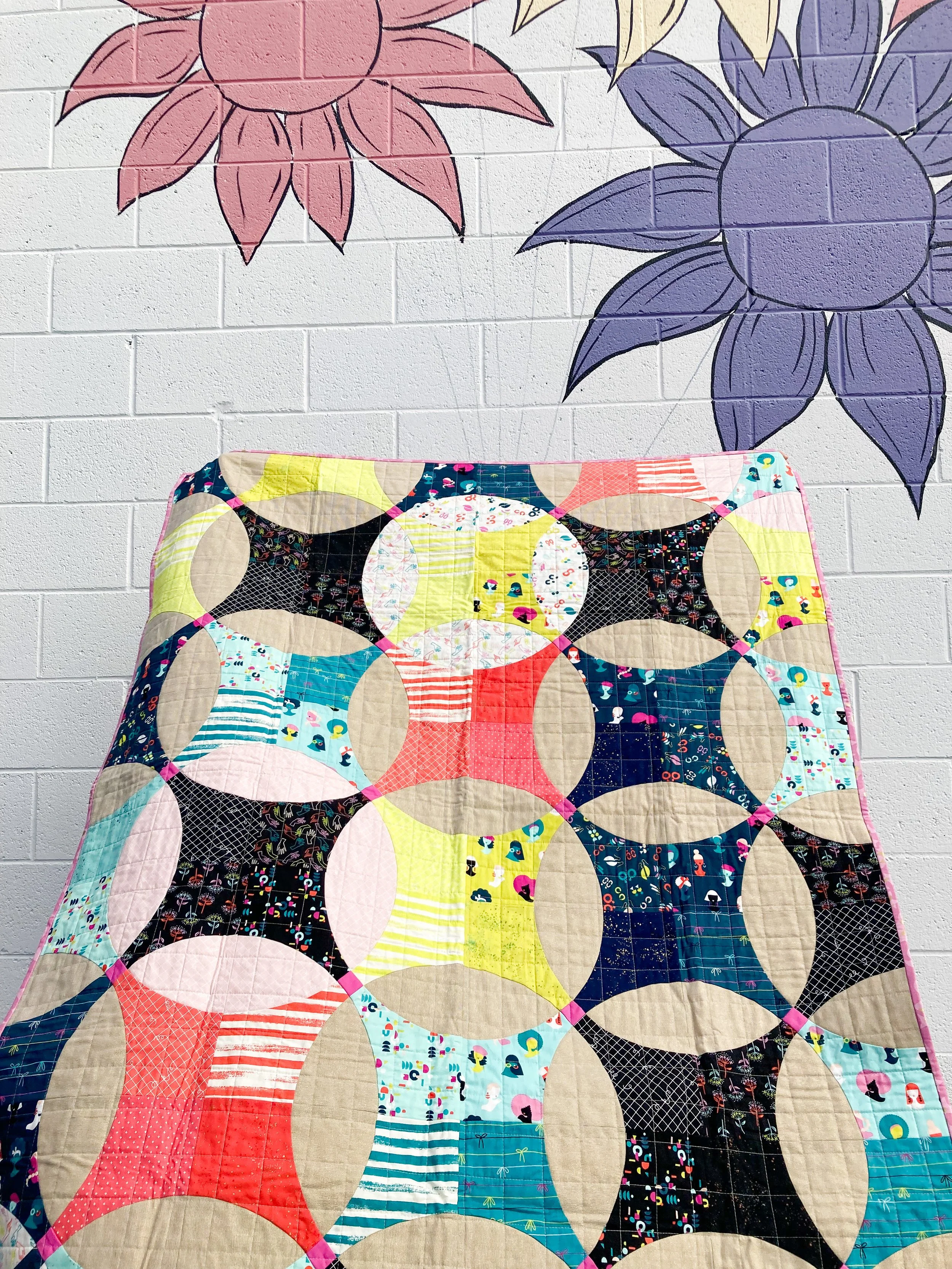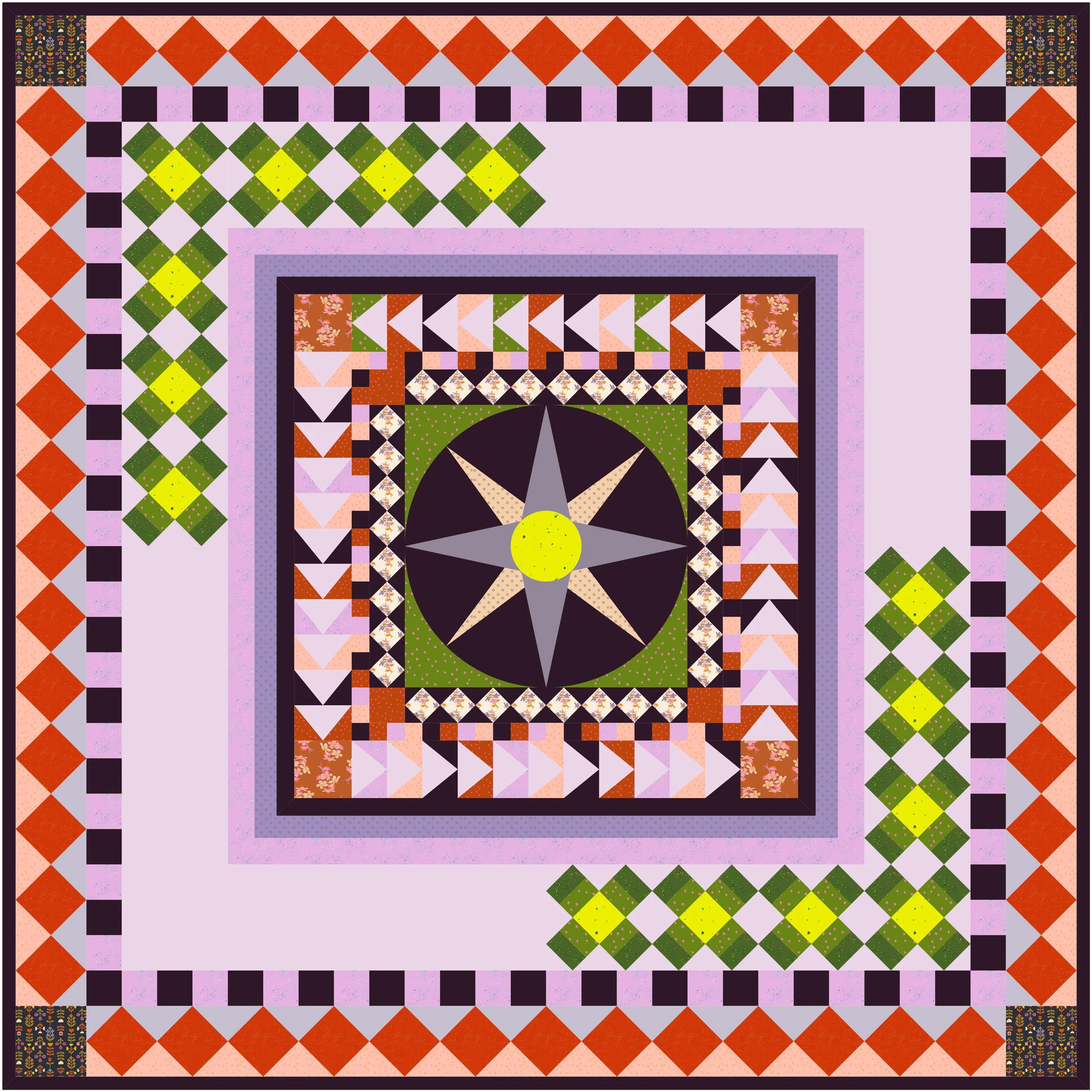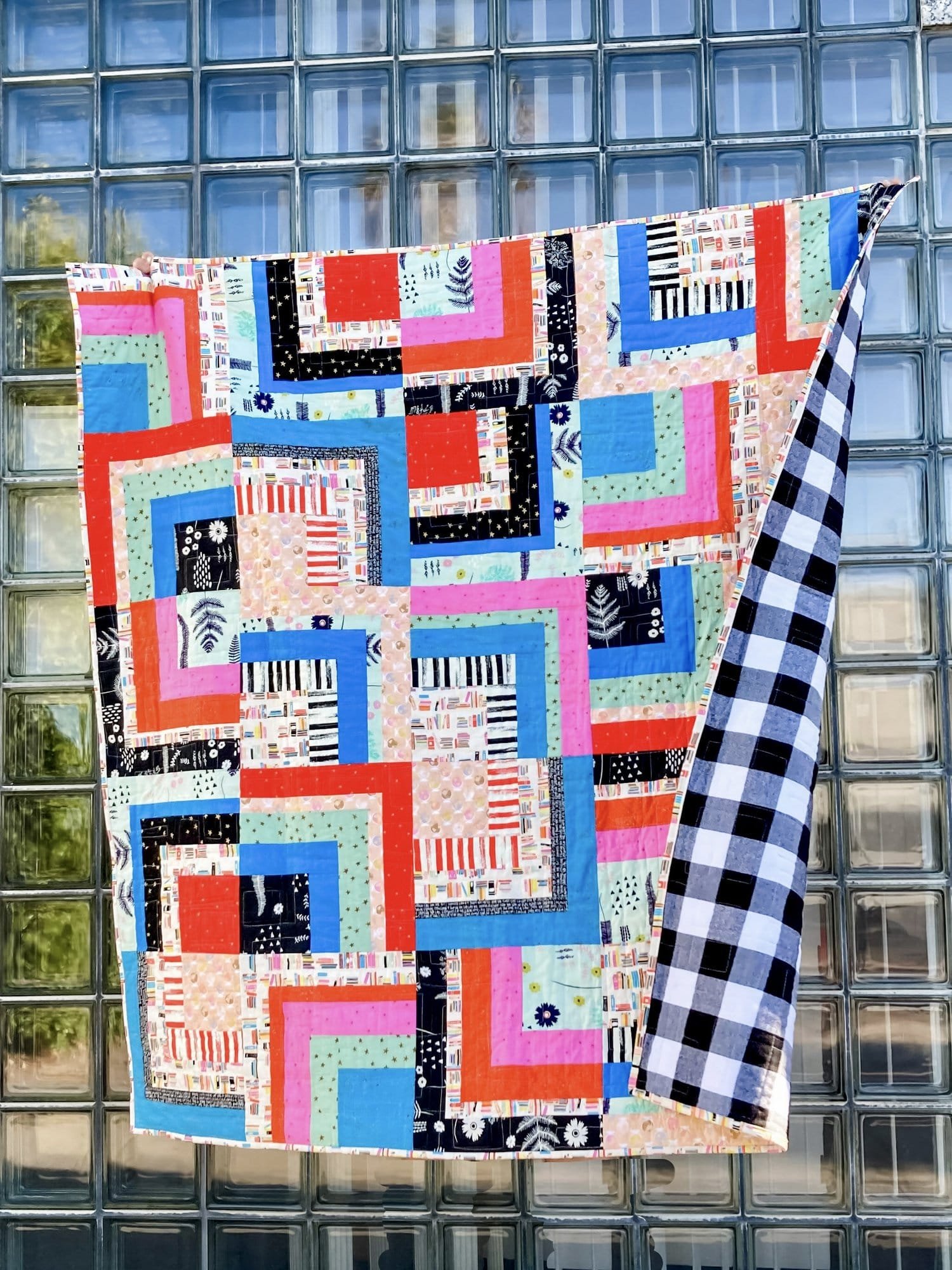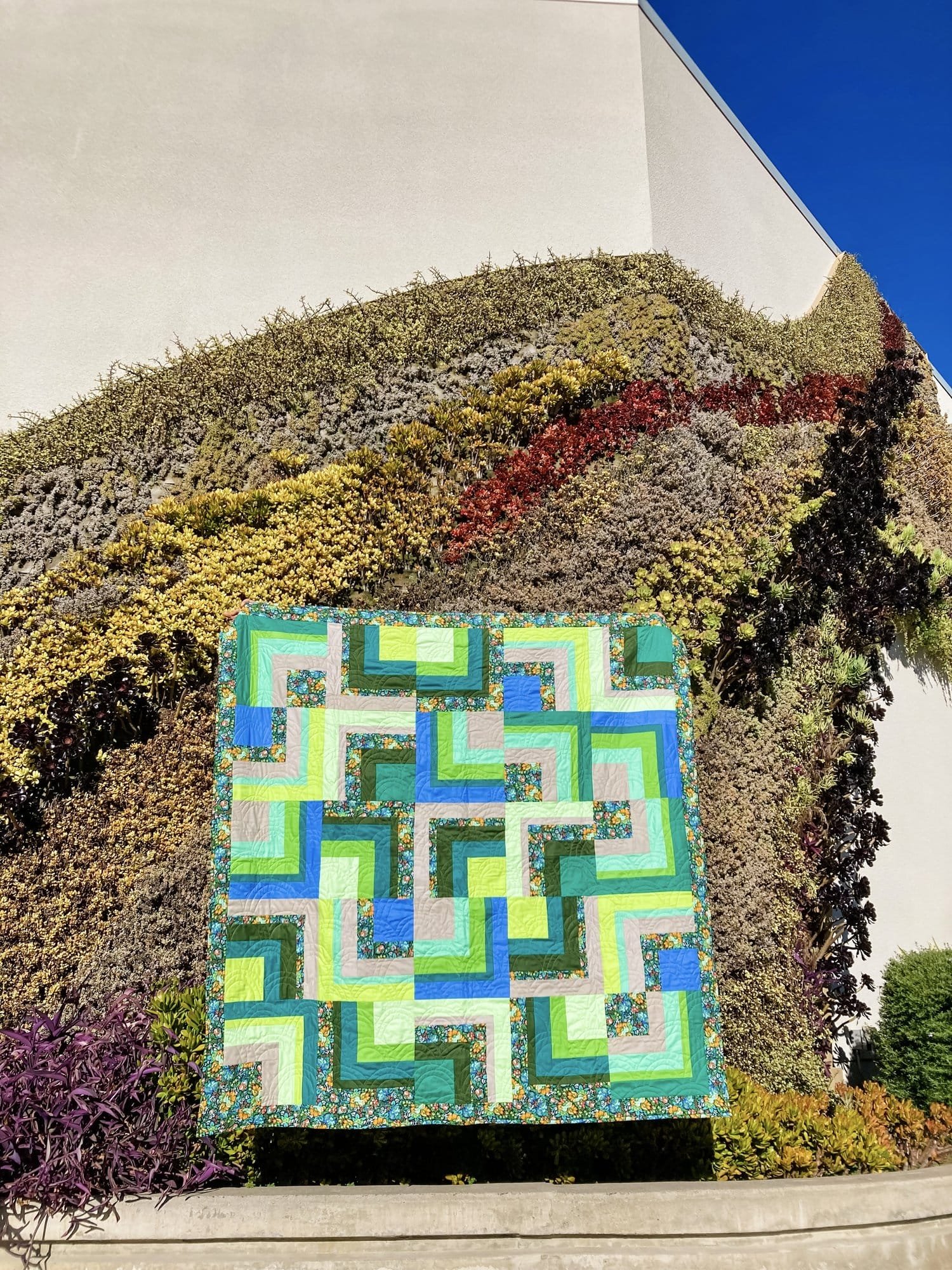The Essential Quilt Block List
8 Quilt Blocks Every Quilter Should Try at Least Once
Quilt blocks are rich texts. Each one carries its own history, its own rhythm at the sewing machine, and its own little spark of creativity when it finally comes together. Some are the bread-and-butter of quilting; you’ll find them in every beginner’s sampler. Others are the big, bucket-list showstoppers you dream about making “someday.” They’ll be on your TBQ list (To Be Quilted).
This list is a mix of both. A few are approachable skill builders you can stitch up this weekend, while others are steeped in tradition, challenge, and symbolism. Together, they connect us to generations of quilters while giving us endless room to play with modern color, fabric, and layout.
Log Cabin
At its core, the Log Cabin block is built from simple strips of fabric, or “logs,” arranged around a central square. The effect is a series of radiating frames that can be rotated, mirrored, or set together to create endless layouts. That center square has traditionally symbolized the warmth of the hearth, traditionally made with red fabric, making the Log Cabin both a technical and symbolic building block.
What makes the Log Cabin so enduring is its versatility. Timeless, ubiquitous, endlessly variable, it might be the ultimate starter block, but it never loses its charm. Its roots reach back through quilting tradition, symbolizing hearth and home, and its variations stretch across every corner of modern design. With Jemima Flendt’s Log Cabin Toss pattern, you can see just how versatile it can be—the green-and-blue Albers Green Floral quilt and my Book Nook quilt both use the same pattern but tell completely different color stories.
The bold Metropolitan Dawn quilt takes the Log Cabin in yet another direction, with a striking pink-and-yellow palette that makes central block, in a modern floral by designer Leah Duncan, positively gloooow.
The Log Cabin also plays well with others. Modernly Morgan’s Cozy Cabin quilt shows how this block can shine alongside other designs for even more variety. And if you want a closer look at my own take on this pattern, you can read the blog post where I share my test version.
Along the way, you’ll learn how to use your scraps, play with color placement, and see how small shifts in value can completely transform a quilt. From barn-raising layouts to oversized statement blocks, the Log Cabin is one you’ll come back to again and again, whether you’re chasing tradition, enjoying the meditative building process, or giving it a modern spin.
Flying Geese
The Flying Geese block is built from a triangle “goose” in the center, flanked by two smaller triangles that form its wings. That simple shape gives it its name and makes it instantly recognizable in quilting. Depending on how you place and repeat them, these little geese can fly solo, march in neat rows, or flock together to form larger designs like borders, diamonds, or even whole quilts full of movement.
Dynamic and directional, Flying Geese are the arrows of the quilting world. They point, they guide, and they bring instant motion to a quilt top, like wings in flight. This block is foundational—learn it once and it shows up everywhere. It’s a skill builder that teaches precision piecing and trimming, and it pops up in stars, borders, medallions, or on its own in bold rows. I used it in my Winter Roses quilt, where the simple repetition of geese created all the drama the design needed.
Sawtooth Star
The Sawtooth Star is one of the most recognizable quilt blocks, and for good reason. Its structure is simple yet striking: eight crisp points formed by Flying Geese units (see, they’re everywhere) radiate from a central square, with four corners framing the design into a perfect star. Simple and versatile, you’ll see the Sawtooth Star in everything from antique heirlooms to bold, modern quilts.
Because it’s built on Flying Geese, the Sawtooth Star is also a natural skill-builder. Learning to piece and trim those units accurately lays the foundation for mastering this block, and once you do, you’ll quickly see why it’s so beloved.
With Sawtooth Stars, you’ll practice accuracy in piecing, start to see how secondary designs emerge when stars repeat, and realize how one block can carry an entire quilt.
Just look at these examples: Shadow Stars by Jemima at Tied with a Ribbon turns the block into a modern, dynamic layout, while the road trip quilts, available in the handmade shop, play with placement and color to give the stars a scrappy vibe. The Vanagon Road Trip quilt shines in shades of chartreuse, green, and aqua, while the Sprinter Road Trip quilt shifts to bright cobalt blue, navy and black to complement its evening roller disco theme.
It’s proof that this classic block has staying power. It’s timeless in tradition, but always ready for a new twist.
Ohio Star
The Ohio Star has been a quilting favorite for over two centuries, known for its clean symmetry and timeless appeal. The block is built from a simple nine-patch grid, with a solid square at the center, hourglass units forming the star points, and plain corner squares to frame it all together. That combination gives the Ohio Star its hypnotic geometry. It’s balanced, striking, and endlessly adaptable, making it just as popular with today’s quilters as it was in the 1800s.
Because of those hourglass points, the Ohio Star takes a little more time and precision than simpler blocks, but the payoff is worth it. The result is a design with undeniable charm and plenty of room for play, where small changes in fabric or layout can completely shift the mood of the quilt.
One of my favorite ways to see this block shine is in the Mom & Pop quilt pattern by The Makings of Joy. The San Diego heirloom Mom & Pop quilt (sorry, she already sold and has a new home) shows how mixing Ohio Stars with Sawtooth Stars creates a lively, scrappy composition, while the Groovy Soul quilt takes the same pattern in a totally different direction with quirky, retro-themed fabrics and a groovy 70’s color palette.
It’s a reminder that the Ohio Star is both classic and versatile; it’s just as at home in a heritage-inspired quilt as it is in a funky, contemporary one.
Bear Paw
The Bear Paw block is instantly recognizable with its bold, claw-like points radiating from a central square, usually arranged within a four-patch layout. Built from half-square triangles and small squares, the design mimics a pawprint—sometimes oversized and dramatic, other times scaled down and sweet.
Beyond its geometry, the Bear Paw carries rich symbolism: strength, protection, and parenthood/motherhood. It’s an iconic block that feels just as at home in a bold bed quilt as it does in a playful baby quilt or nature-inspired design.
Technique-wise, you’ll get comfortable with half-square triangles and directionality. Think giant paws blazing a path across a bed quilt, or tiny paws dancing through a baby quilt.
I’m actually working on a Bear Paw quilt pattern of my own right now, and it’s been such a fun challenge to see how this classic block can be reimagined in a fresh way. In the meantime, I want to highlight some other beautiful Bear Paw designs that are already out in the world. Patterns like Meghan’s Bearfoot Ballet or Holly Clarke’s Teddy Bear Paw (seen here) are fresh, modern takes worth checking out.
Double Wedding Ring
The Double Wedding Ring is one of quilting’s most beloved and instantly recognizable designs. Its signature interlocking circles are built from curved arcs joined at small corner squares, creating a continuous chain that links beautifully across the quilt. Beyond its striking geometry, the block carries deep meaning—connection, unity, and tradition—which is part of why it has remained a bucket-list project for generations of quilters despite its challenging piecing.
This isn’t a quick finish. Curves, pieced arcs, and careful alignment require patience and precision, but the result is an heirloom quilt that will be treasured for decades. It’s also one of the most popular choices for wedding and anniversary gifts, with the time and labor that go into each piece serving as a metaphor for the commitment it represents.
If you want to go deeper, Victoria Findlay Wolfe is the artist to learn from. She’s created extraordinary modern interpretations of the Double Wedding Ring, showing how this classic can be reimagined again and again. Her book, Double Wedding Rings: Traditions Made Modern, is a beautiful resource packed with ideas, and the images you see here are mockups from her own shop of patterns she has designed. I highly encourage you to explore more of her work on her website.
Flowering Snowball
The Flowering Snowball is one of those magical blocks that looks far more complicated than it really is. Built from a mix of gentle curves and straight seams, it creates an illusion of overlapping circles and petal-like shapes.
Depending on how you place color and value, the design can highlight shield-like motifs radiating across the quilt or emphasize the round, interconnected ellipses that ripple from block to block. That flexibility is part of its appeal. Bold solids give it sharp, modern energy, while busy prints make it lush and layered.
At first glance, the Flowering Snowball might look tricky, but don’t let those curves fool you, it’s much friendlier than it seems. With the right fabric placement, this block creates mesmerizing patterns that almost feel kaleidoscopic.
Sewing it will help you get comfortable with curves while also opening the door to playful geometry. It’s one of those blocks that can shift dramatically depending on fabric choice. You can choose to highlight the “shield” like shapes that web together across the quilt, or the curved ellipse shapes that create a circle around the shields. You can group like colors together, or get totally scrappy with it.
My Adorned Shield Quilt shows how dynamic it can be in glamorous Adorn fabric from Rashida Coleman-Hale, while the Gleaned version (right) leans into texture and subtle shifts of color in Carolyn Friedlander’s prints.
The Ruby Star Society Little Darlings collection version (below) has already sold, but you can see I tend to favor the layout that groups like colors together.
Storm at Sea
The Storm at Sea block is one of quilting’s best optical illusions. Built from nothing more than squares, rectangles, and diamonds, it somehow gives the impression of curves and flowing waves. The geometry tricks the eye into seeing motion where there is none, creating a quilt top that feels alive with rhythm and depth. Depending on color placement, you can make the “waves” swell dramatically, form rippling paths, or even build recognizable motifs like hearts or stars.
Traditionally, Storm at Sea is symbolic of journeys, challenges, and resilience. It has often been used in memorial quilts and pieces meant to honor life’s winding paths. At the same time, it offers quilters a chance to explore rhythm and flow in their layouts, where repetition creates motion that feels almost alive.
Skills you’ll hone here: precision cutting, maintaining sharp angles, and working with repeating units to establish flow. For a modern example, take a look at my Tranquil Tribute Quilt, where the block’s movement creates a striking heart motif.
Bonus: Medallion & Mariner’s Compass
The Mariner’s Compass has always carried a kind of starry drama; you can really drill down into its narrative. It’s ancient, magnetic, it has a story to tell. With its radiating points and sharp symmetry, it echoes navigation stars, compass roses, voyages, and exploration in every inch of fabric.
Built in radiating layers or “rounds” of blocks around a central element (like the Mariner’s compass block, for example), medallion quilts are like a sampler quilt in the round, or a row-by-row quilt, but the rows go all the way around. You get the idea.
If you peek into my June Color Clash Quilt Palette, you’ll see how the Compass block is one of the heroes in that palette. In the mock-up I created, the compass center pulses out from a neon yellow “eye,” while softer hues of ice lavender and silvery gray give the radiating points breathing room. It’s bold, modern, and still deeply rooted in medallion tradition (those points go in the four main directions, plus the midpoints).
These blocks deserve their own spotlight. The Compass (and medallion layouts more broadly) are advanced skill builders—precision piecing, symmetry, and patience are all part of the toolkit. Patterns like Elizabeth Hartman’s Aviatrix Medallion or Tara Faughnan’s Roam show just how adaptable these classics can be, both take something formal and historical and make it unexpected and modern.
Quilty Reflections
There you have it—eight quilt blocks (plus a bonus or two) that every quilter should try at least once. They’re more than just building blocks; they’re stepping stones into quilting tradition and gateways into boundless creativity. Some will teach you the fundamentals, some will test your patience, and some will sit on your “someday” list until the right moment comes along. But each one connects you to a long, rich lineage of quilters who stitched before us, and to the future quilters who will take these blocks someplace brand new. So tell me: which of these blocks is calling your name right now?
The Essential Quilt Blocks
Foundational blocks for every quilter to master or add to their “someday” list:
Log Cabin
Flying Geese
Sawtooth Star
Ohio Star
Bear Paw
Double Wedding Ring
Flowering Snowball
Storm at Sea
Medallion (+ Mariner’s Compass)




